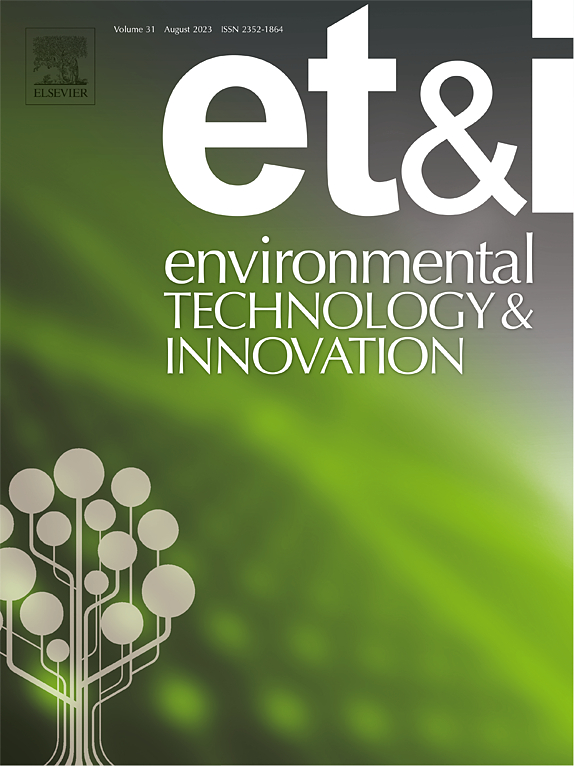IF 6.7
2区 环境科学与生态学
Q1 BIOTECHNOLOGY & APPLIED MICROBIOLOGY
引用次数: 0
摘要
抗生素发酵残渣(AFR)是抗生素发酵过程中产生的副产品,其应用可为土壤提供丰富的养分。然而,人们对连续重复施用不同的抗生素发酵残渣后,土壤中抗生素抗性基因(ARGs)的去向并不完全清楚。因此,我们研究了重复施用三种不同的 AFR(红霉素发酵残渣(EFR)、头孢菌素 C 发酵残渣(CFR)和青霉素发酵残渣(PFR))后细菌群落和 ARGs 的演替。其中,工业规模处理后的 AFR 被连续三年施用到实际田地中,施用量为 7500 kg/hm2。结果表明,施用 AFR 会随着时间的推移影响细菌群落结构。与经过处理的 EFR 相比,经过处理的 CFR 和 PFR 引发了细菌群落的显著变化。此外,AFR还影响了ARGs的丰度,与处理过的CFR相比,添加处理过的EFR和PFR会导致ARGs随时间推移而显著增加,这表明连续重复施用AFR可能会对ARGs的持续存在和传播造成潜在风险。最后,持续时间对土壤 ARGs 的影响最大。这些发现有助于深入了解连续重复施用不同的有机还原剂后土壤中 ARGs 的动态变化。本文章由计算机程序翻译,如有差异,请以英文原文为准。
Dynamics of soil resistome and bacterial composition following multi-year application of different antibiotic fermentation residues
Antibiotic fermentation residue (AFR) is a byproduct of the antibiotic fermentation process, and its application could provide plentiful nutrients to the soil. However, the fate of antibiotic resistance genes (ARGs) in soil with consecutive repeated application of different AFRs is not fully understood. Hence, the succession of bacterial community and ARGs following the repeated application of three different AFRs (erythromycin fermentation residue (EFR), cephalosporin C fermentation residue (CFR) and penicillin fermentation residue (PFR)) was investigated. Herein, AFR after industrial-scale treatment was applied to the actual field for three consecutive years with the dosage of 7500 kg/hm2. Results implied that AFR application affected the bacterial community structure over time. And treated CFR and PFR induced substantial shifts in bacterial community compared to the treated EFR. Additionally, AFR influenced the ARGs abundance, where addition of treated EFR and PFR resulted in a more prominent increase of ARGs over time compared to the treated CFR, suggesting that the consecutive repeated AFR application might pose potential risks to the persistence and spread of ARGs. Finally, duration time contributed most to the soil ARGs profiles. These findings provided insights into the dynamics of soil ARGs following the consecutive repeated application of different AFRs.
求助全文
通过发布文献求助,成功后即可免费获取论文全文。
去求助
来源期刊

Environmental Technology & Innovation
Environmental Science-General Environmental Science
CiteScore
14.00
自引率
4.20%
发文量
435
审稿时长
74 days
期刊介绍:
Environmental Technology & Innovation adopts a challenge-oriented approach to solutions by integrating natural sciences to promote a sustainable future. The journal aims to foster the creation and development of innovative products, technologies, and ideas that enhance the environment, with impacts across soil, air, water, and food in rural and urban areas.
As a platform for disseminating scientific evidence for environmental protection and sustainable development, the journal emphasizes fundamental science, methodologies, tools, techniques, and policy considerations. It emphasizes the importance of science and technology in environmental benefits, including smarter, cleaner technologies for environmental protection, more efficient resource processing methods, and the evidence supporting their effectiveness.
 求助内容:
求助内容: 应助结果提醒方式:
应助结果提醒方式:


